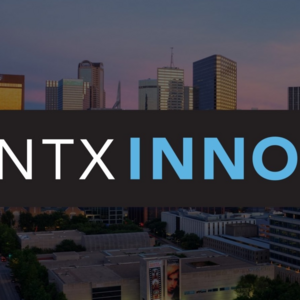
Grand visionaries set the tone. Technology and entrepreneurship paved the way. And these days, Texas innovators are building everything from rockets and lunar landers to satellites, sensors and software that play pivotal roles in humanity's future both here and off in the great beyond.
Texas has been known as a hub for space technology since the early 1960s. It has huge stretches of nearly vacant space to test rockets without major risk to nearby communities, as well as ideal seaside landscapes along the Gulf Coast.
But the game has changed a lot in recent years.
Now, young companies including SpaceX and Blue Origin have stolen much of the spotlight from NASA, launching shuttles from south and west Texas, and a batch of smaller startups is building satellites, advanced sensors and other high tech components that will help bring humanity back to the moon and, one day, to Mars.
They're fueled, in part, by record-setting levels of venture capital investment in space tech. Venture funding for space tech has grown from $2 billion in 2017 to $6 billion last year, according to Crunchbase data. This year, investors have made $5.2 billion in deals already.
In Texas, these new players include billion-dollar rocket company Firefly Aerospace near Austin, satellite-launching EXOS Aerospace in the Dallas area and lunar lander developer Intuitive Machines in Houston. While exploration and discovery may be the beating heart of these endeavors, make no mistake, revenue is right alongside it.
"This is America, so it's all about money," Tom Markusic, founder and CEO of Firefly Aerospace, said recently. "You need to understand that space is not just about a man on the moon. It's not just about exploration. Space can really be thought of as the next frontier of the information revolution. What we're doing in space is very much tied to the advancement of the internet. It's tied to the voracious and insatiable appetite of the entire world for data. So space provides us with a new degree of freedom, or a new way, to distribute data around the Earth more uniformly and more holistically than we've ever been able to do before."
With a new space race underway, reporters at Houston Inno, NTX Inno and Austin Inno have spent the past several weeks interviewing Texas aerospace innovators to provide a more detailed look at the most intriguing recent startups and developments in three of Texas' hottest space tech markets.
Time to launch...
North Texas: Sending thousands of satellites into orbit
While the space-focused technology being developed in North Texas might not be the stuff movies are made of, innovators in the region have been testing the limits of human exploration before NASA put anyone on the moon.
The region’s ties to the stars started with larger players in the tech industry. In 1961, the founders of Texas Instruments launched the Graduate Research Center of the Southwest to create the talent pool it needed for its workforce. The institution, renamed the Southwest Center for Advanced Studies in 1968 and later UT Dallas in 1969, has been responsible for helping equip space missions with tools to test for things ranging from the presence of a lunar atmosphere to the effects of cosmic rays.
“Our area is really on the stage as an important actor in this episodic race,” said UT Arlington’s Aerodynamics Research Center Director Luca Maddalena.
Now, local universities and new players in the startup scene are helping enable the next generation of space flight and exploration as the industry moves from a government and defense effort to a commercial one.
One company ushering in a new era of space flight is Firehawk Aerospace. Like most industries, it works closely with NASA, whose Administrator Bill Nelson expects the International Space Station to replace a commercial space station by 2030. The Harlow Capital-backed company makes customizable rocket engines that use 3D-printed fuel grains. It has its headquarters in Richardson, with a test facility at the Stennis Space Center in Mississippi.
Firehawk moved its headquarters from a hub of space activity – Florida – to DFW earlier this year, a move CEO Will Edwards said was driven by the talent that is still being produced locally, in addition to the proximity to giants of the industry like Raytheon and Lockheed Martin. Dallas also has a large density of investors in the sector.
“Texas has a great Investor community. It's really supportive with growing businesses, and at this point at this stage, our company was looking for a city that we could really become a part of, and they can help us grow,” Edwards said. “As we were looking around the country at different states, it seemed like Texas really pushed this idea that we want to grow companies internally and that that really attracted us.”
Also working on space flight is reusable space vehicle maker EXOS Aerospace, which plans to relocate its headquarters from Greenville to McKinney and hire hundreds in the coming months. The company was born out of former Mesquite-based commercial space flight startup Armadillo Aerospace, launched in 2000. The company found early success in Northrop Grumman’s Lunar Lander Challenge but was ultimately put on pause. Now, it’s focused on orbital air launches and has recently received a memorandum of understanding with a 30-month deadline to produce its new vehicle to help launch 10,000 satellites into space.
EXOS Co-founder and COO John Quinn also cited proximity to historical players in the region and tech talent from local universities as a reason for the move, adding that companies like SpaceX and Blue Origin have brought a new batch of industry workers the state that has hands-on experience with building rockets.
“There have been 3,000 experiments done on the International Space Station, probably 1,000 of those had very positive results for either space manufacturing or space research,” Quinn said. “Our mission is to enable the minds that have come up with all these great technologies to be able to produce now what they've proven they can do over the last 20 years on the ISS.”
Like in the early days of the Space Race, several local companies aren’t focused on putting a person on the moon or a different planet but rather on making the instruments and technology that allows that to happen. Launched in 2009, Dallas’ Astrapi Corporation’s telecom technology uses spiral-based modulation with varying amplitude, which allows for more efficient data transmission, more reliable networks and the ability to receive signals in deep space that would otherwise be too weak to receive. The company was recently accepted into the Colorado-based Catalyst Accelerator’s Cyber for Space Applications as it works to develop the second-generation prototype of its technology.
“We enable (new space technology). You're seeing huge flows of capital going that way, and it's not just defense,” said David Shaw, Astrapi’s co-founder and chief commercialization officer. “Privatization of it is dropping the cost dramatically. So, when you've got reusable launch vehicles, and you can come in and build the small cube sets and deploy them, you can demonstrate them in their work. Then, the race is on. You're basically setting up networks over top of that."
Nearly every person NTX Inno spoke to in reporting this story pointed to one area of space technology that will become increasingly important as missions look to land and launch on different surfaces and take commercial passengers across the globe in hours: hypersonic capabilities. And like with North Texas’ early entrance into space technology, it is being pioneered at a local university.
UT Arlington, which recently became Texas’ fourth Tier One-designated school, is home to only a handful of arc-heated, hypersonic wind tunnels in the country. Teams there, led by Maddalena, are working on projects ranging from testing the limits of materials that new crafts could be built from to looking at how lasers are affected by the plasma flow around a craft when it is in hypersonic speed. Since opening the tunnel in 2019, research projects have attracted millions in funding from organizations like the Office of Naval Research and DARPA.
“There are a lot of scientific issues. Where academia fits in this ecosystem is certain things are at the system level, so they need to be understood at the fundamental level. The challenge is to implement it in practice and to optimize the system,” Maddalena said. “We see that hypersonic propulsion is going to be a major, major effort. It has to be because it's the next step.”
Houston: To the moon and beyond
In a lot of ways, the aerospace sector helped get Houston to where it is today. Now, a new generation of Houston-based space tech companies is ushering in a new era with the commercialization of space.
The impact of the aerospace industry on Houston's growth and development has been profound. In 1961, the Manned Spacecraft Center — now known as the Lyndon B. Johnson Space Center — was established on land southeast of Houston donated by Humble Oil. The establishment of NASA's footprint in the Houston region generated business opportunities for aerospace companies and companies in engineering, construction, commercial and residential real estate, retail, and more.
A year after the MSC was established in 1961, the Friendswood Development Co. began development on its first master-built community, Clear Land City, in the area around the space center. In addition to sprawling residential neighborhoods, the Clear Lake area is home to all kinds of space tech, engineering and manufacturing companies supporting the aerospace industry.
Intuitive Machines, a Houston-based firm headquartered on Bay Area Blvd. just miles from the JSC, is one of the innovative companies in Space City supporting NASA. When the company launches its lunar lander early next year, Intuitive Machines will be the first private U.S. company to land a spacecraft on the moon's surface.
Steve Altemus, co-founder and CEO of Intuitive Machines, said that programs like NASA's Commercial Lunar Payload Services (CLPS) program had catalyzed the firm's growth. In 2019, Intuitive Machines was awarded a $77.2 million contract to develop, launch and land its Nova-C spacecraft on the moon.
Intuitive Machines is full steam ahead on preparations for launching a SpaceX Falcon 9 spacecraft from the Kennedy Space Center at Cape Canaveral, Florida, in the first quarter of 2022. Altemus said that NASA is targeting a launch date for the end of February or early March. Intuitive Machines' lunar lander will touch down on the surface of the moon six days later.
"Kennedy Space Center launch pad 39-A," Altemus said of the site of the planned launch next year. "I launched space shuttles for a living when I worked at Kennedy Space Center for NASA. To see Intuitive Machines, my company, be able to launch something off of pad A and take it to the moon is just an incredible feeling."
The Nova-C lander is capable of carrying 100 kilograms of payload to the surface of the moon. The Intuitive Machines lander will carry five NASA payloads and commercial cargo and operate for 14 days on the first lunar mission.
Altemus said that Intuitive Machines is building, assembling, integrating, and testing the lander vehicle for the lunar mission. The company is also training its Operations Center team for their shifts commanding and operating the vehicle.
"It's really getting serious at this point," Altemus said.
Intuitive Machines won't be done after the spring 2022 launch. The company has two additional missions to the moon planned for December 2022 and the first quarter of 2024.
During its second trip to the moon in December 2022, Intuitive Machines will deploy the first communication satellite orbiting the moon — the beginning of broader communication and networking infrastructure to support future missions.
The company aims to lean into the as-a-service model to continue working in the lunar services space. Future orbital services include repairing and replacing communications satellites and working to remove some of the orbital debris floating in space, Altemus said.
"That whole skill of satellite servicing and orbital services is something that we're going to extend to as our next big technology breakthrough," Altemus said.
Back here on Earth, Intuitive Machines is in the process of building a new 125,000-square-foot facility to expand its footprint at the Houston Spaceport. Intuitive Machines had previously leased 9,635 square feet to be the first anchor tenant at the Spaceport, and the firm decided it needed more room to support future growth and operations.
Austin: Building rockets and monitoring space junk
While Austin has long been known as a tech city that pushes the limits of semiconductor and software development, its role in advancing space-bound technologies is relatively new.
This fresh wave of aerospace innovation has been propelled by Austin's growing tech talent pool, space entrepreneurship programs at the University of Texas and the flood of venture funding flowing to space tech startups.
Having Elon Musk jetting around between Austin and SpaceX's base in Boca Chica probably hasn't hurt either. But, don't forget, before the likes of Richard Branson and Jeff Bezos funded their trips into zero gravity, Austin entrepreneur Richard Garriott, son of NASA astronaut Owen Garriott, self-funded A $30 million trip on a Russian rocket to the International Space Station, where he spent 12 days in 2008.
But these days, there's perhaps no more exciting local development in Austin than Firefly Aerospace's success in both fundraising – it's now raised about $200 million and has a valuation said to be north of $1 billion – and rocket development.
After years of building and testing rocket engines north of Austin in Cedar Park and Briggs, Firefly is poised to conduct its first-ever test flight, which will blast off from Vandenberg Space Force Base in California on Sept. 2.
"It's such an exciting time now because it's really the first time where we don't have to rely on the government to do everything in space, and that's not to disparage what the government could do," Firefly CEO Markusic said. "We live in an era now where the government can do what it's best out, and the commercial sector can do what it's best at."
That dynamic is visible on many space tech founders' resumes, which often include stints with universities, NASA and the U.S. Department of Defense.
Slingshot Aerospace CEO Melanie Stricklan is among those with government service with the U.S. Air Force in her background and private sector success on the horizon.
Slingshot, which is co-headquartered in Austin and El Segundo, California, recently developed and debuted a new space object monitoring and communications platform called Beacon. It's seen as a potentially game-changing system that helps satellite and spacecraft operators discuss the orbital paths of other satellites and objects, which have the potential to destroy multi-million dollar satellites and endanger others in low Earth orbit.
Stricklan stopped short of calling Austin a hub for space tech. But she said it is on its way, with help from private and public investors.
"I think the incentives will drive that," she said. "And if the cost of living can stay at a reasonable place, I think you'll see huge growth in Texas. And the regulatory environment is helpful. And so, those attributes of Texas-based businesses are attractive. If that can continue, then I think you'll see a huge increase."
Now, let's take a quick look at a few other Austin-based space projects.
CesiumAstro, an Austin company that develops hardware and software for commercial and defense projects, plans to send its first two satellites into space on the Atlas V rocket that will deliver NASA’s Landsat 9 to orbit in September. The cubesats will use high-tech communications to conduct several experiments in a partnership with the DoD's Defense Innovation unit.
Meanwhile, in late August, Austin-based research company Nanohmics Inc. sent its hyperspectral imaging sensors up to the International Space Station on SpaceX Dragon's CRS-23 flight. Those sensors might help scientists better understand climate change and help defense officials spot chemical abnormalities that might be a sign of chemical agents or other weapons.
But some of Austin's contributions to space innovations are Earth-based for the time being. For example, 3D printing startup Icon has developed a structure inside Houston's Johnson Space Center to simulate what long-term living on Mars might be like, and test crews will begin living in it soon.
Texas has perhaps always had lofty ambitions that aim to influence the world — the universe is a natural stepping stone.
And Hypergiant, which has offices in Austin, Dallas and Houston and operates a division called Hypergiant Galactic Systems, is among several companies that have teamed up with the U.S. Air Force to develop an all-encompassing data platform calls the Joint All-Domain Command and Control.
One of the newest additions to Austin's space tech ecosystem is a collaboration between the University of Texas in Austin and El Paso and the U.S. Space Force to help more students launch careers in space defense technologies.
Slingshot's CEO said the combination of commercial and defense applications would help sustain future space endeavors and play a major role in the nation's future defenses.
"For this economy and for our nation's ability to operate and protect and defend our orbital assets, we must invest in software and systems to form that digital infrastructure to protect and evolve this legacy," Stricklan said during the Space Foundation's Space Symposium in late August. "We are completely dependent on this as humanity, globally."
An earlier version of this story incorrectly described how Slingshot's new collision avoidance platform works. The story has been updated.






